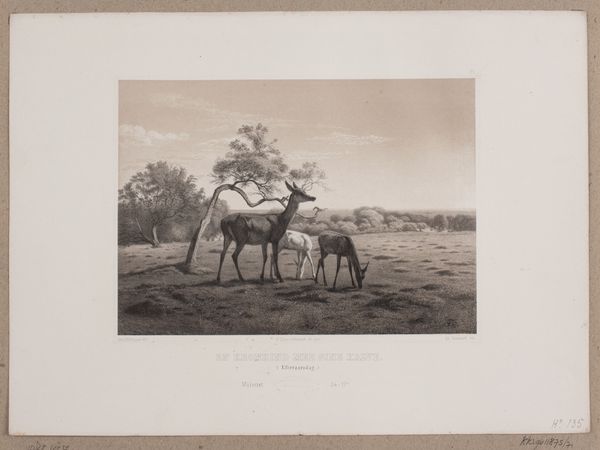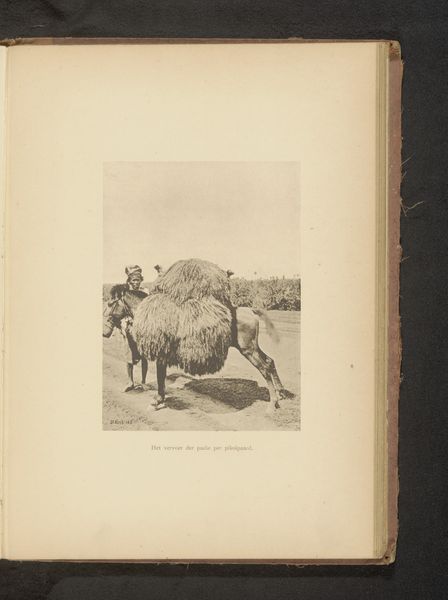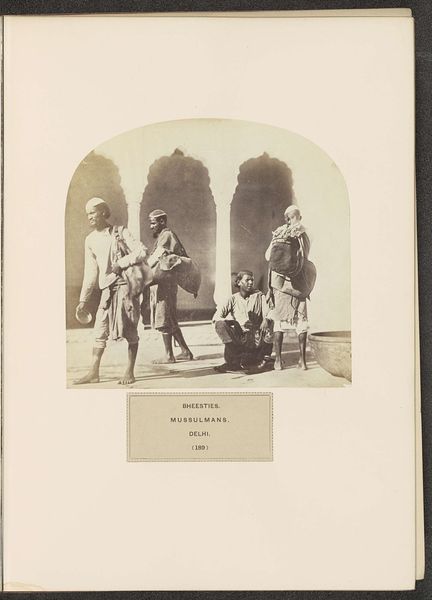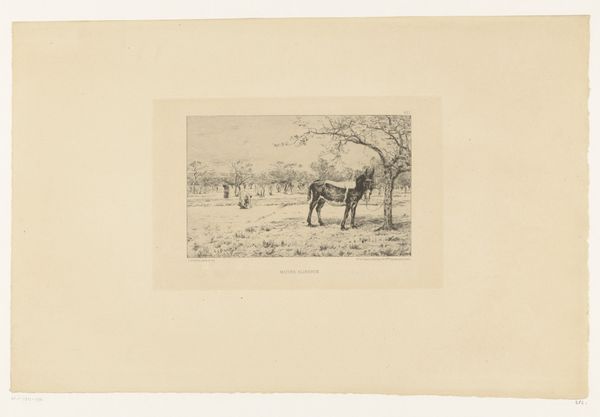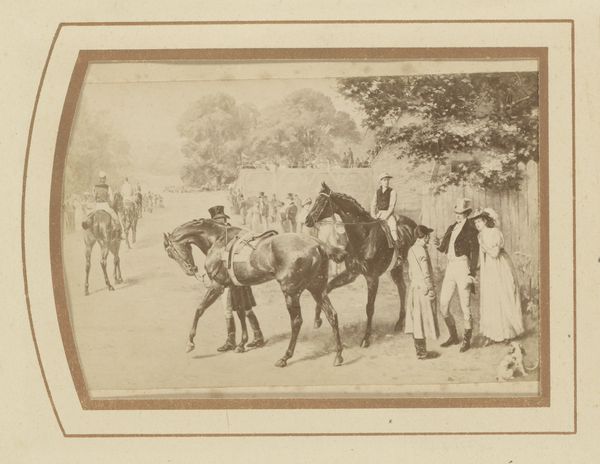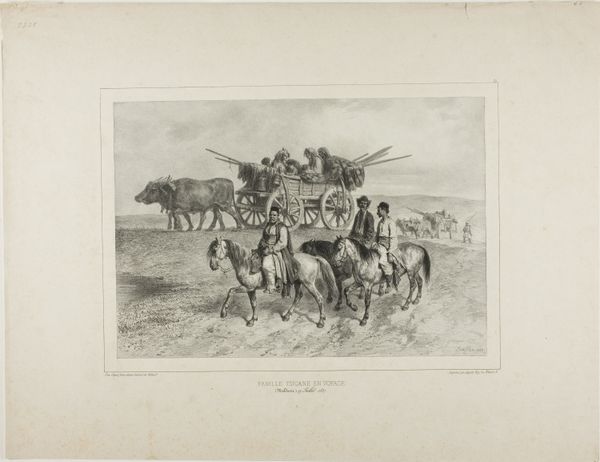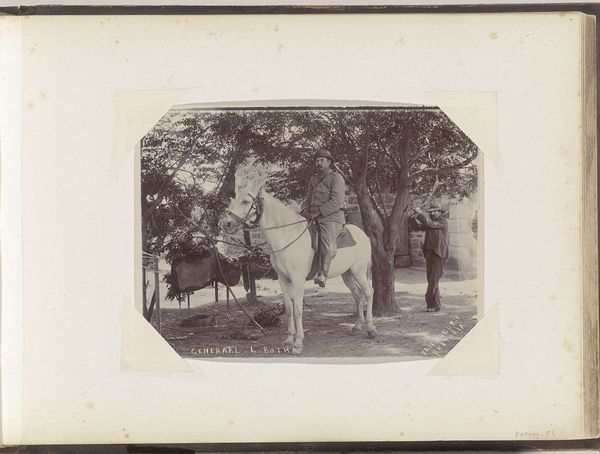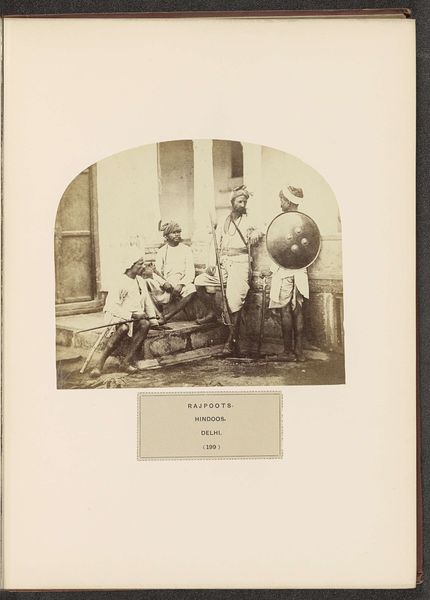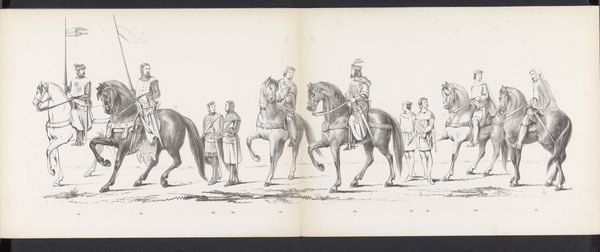
Fotoreproductie van La Meilleure Monture door Jean Baptiste Robie before 1883
0:00
0:00
photography, albumen-print
#
portrait
#
photography
#
orientalism
#
genre-painting
#
albumen-print
Dimensions: height 152 mm, width 100 mm
Copyright: Rijks Museum: Open Domain
Curator: Let's delve into this albumen print, a photographic reproduction of Jean Baptiste Robie’s "La Meilleure Monture," created before 1883, by Alexandre, the photographer. What strikes you initially about it? Editor: Well, it has this romantic, almost dreamlike quality. An elephant adorned for what looks like travel or maybe even war, with multiple riders. It seems very staged, but also, given its date, indicative of colonial perspectives. How do you interpret the context here? Curator: Exactly. Consider the albumen print itself – the materials, the chemical process, and the labour involved in producing it. These images were commodities, reproduced and consumed within a specific market hungry for exotic scenes. This Orientalist aesthetic reinforced power dynamics through consumption. This is an "exotic" portrait made for profit. The means of producing that illusion matters here. Editor: So, the photograph itself isn’t just an image, but also evidence of a system of production and a tool of propagating a certain viewpoint. Was the mass production impacting the art world and the creation of the "unique piece?" Curator: Absolutely. Photography democratized imagery while also introducing new forms of artistic and social control. This piece straddles those worlds; it relies on the original artistry of the painting by Robie, but translates it into the reproducible format of photography. What kind of cultural message does that reinforce at that moment? Editor: So the cultural impact isn’t just the scene itself, but also in how it was captured, reproduced, and consumed. I didn't initially realize how much the production of the *photograph* was related to colonialism. Curator: Precisely! It gives us so much insight into the processes and socio-economic networks of the time, expanding what we would consider art to include the technologies that delivered imagery. What was once an elite painting now is for everyone.
Comments
No comments
Be the first to comment and join the conversation on the ultimate creative platform.
